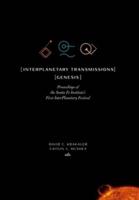Publisher's Synopsis
A quasi-tailless flight investigation was launched using the X-31A enhanced fighter maneuverability airplane. In-flight simulations were used to assess the effect of partial to total vertical tail removal. The rudder control surface was used to cancel the stabilizing effects of the vertical tail, and yaw thrust vector commands were used to restabilize and control the airplane. The quasi-tailless mode was flown supersonically with gentle maneuvering and subsonically in precision approaches and ground attack profiles. Pilot ratings and a full set of flight test measurements were recorded. This report describes the results obtained and emphasizes the lessons learned from the X-31A flight test experiment. Sensor-related issues and their importance to a quasi-tailless simulation and to ultimately controlling a directionally unstable vehicle are assessed. The X-31A quasi-tailless flight test experiment showed that tailless and reduced tail fighter aircraft are definitely feasible. When the capability is designed into the airplane from the beginning, the benefits have the potential to outweigh the added complexity required. Bosworth, John T. and Stoliker, P. C. Armstrong Flight Research Center RTOP 505-68-30...










